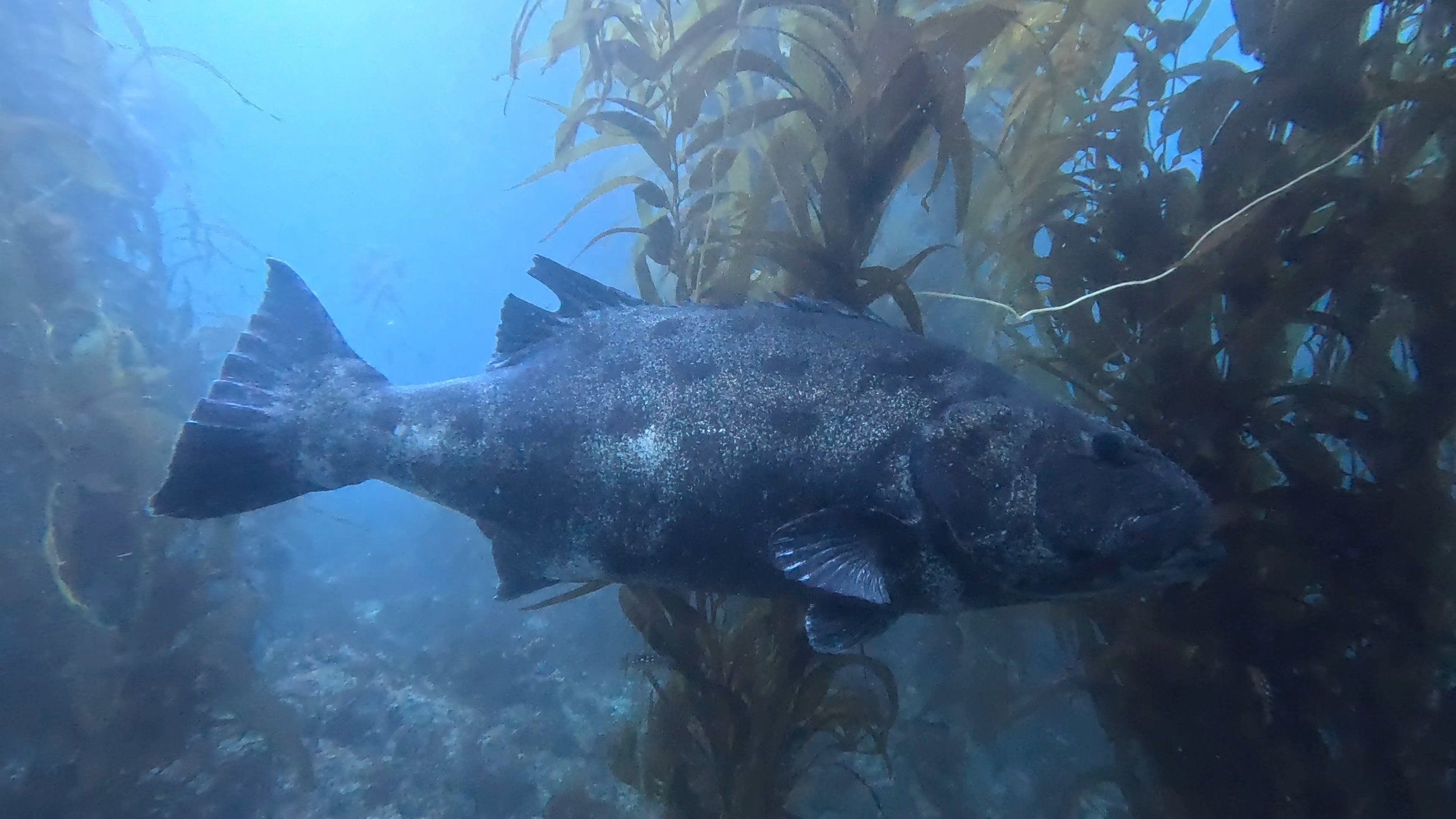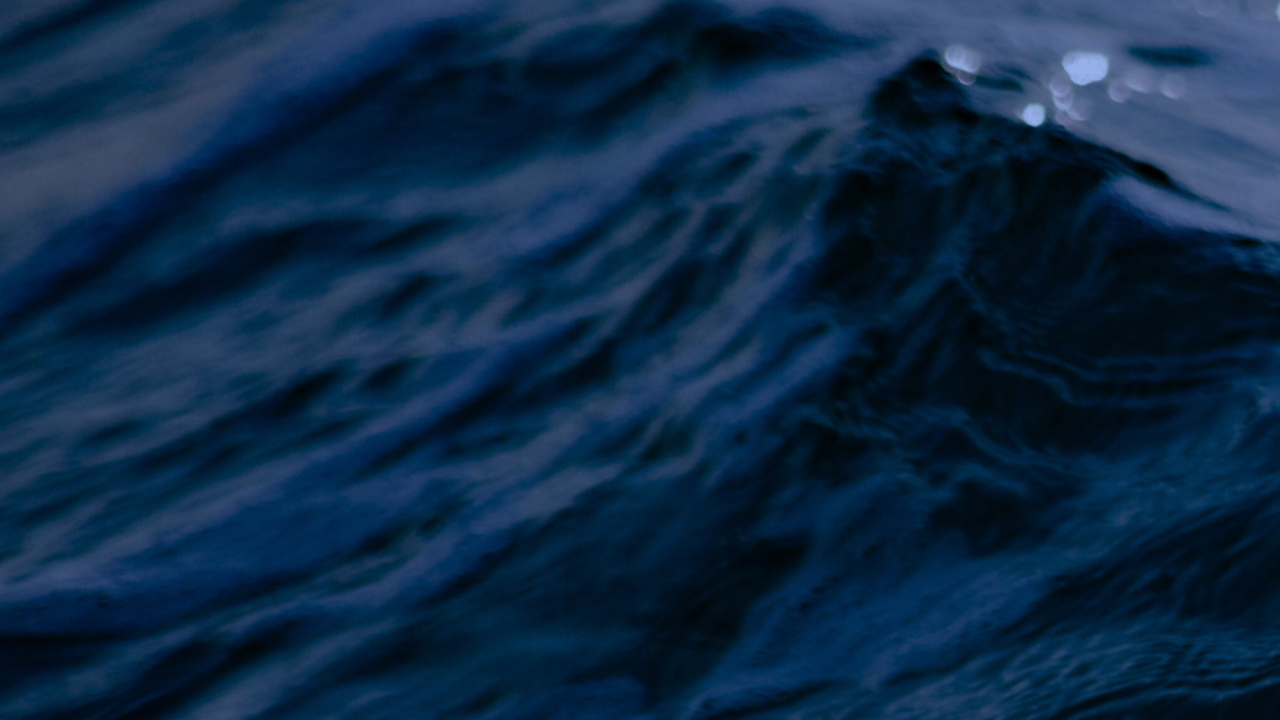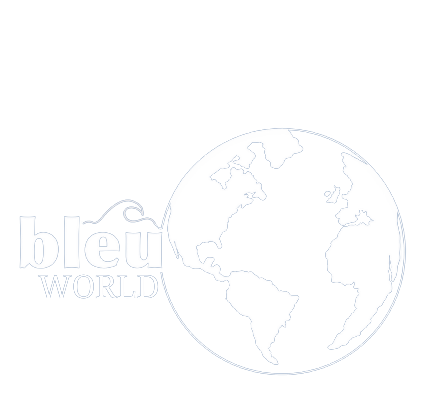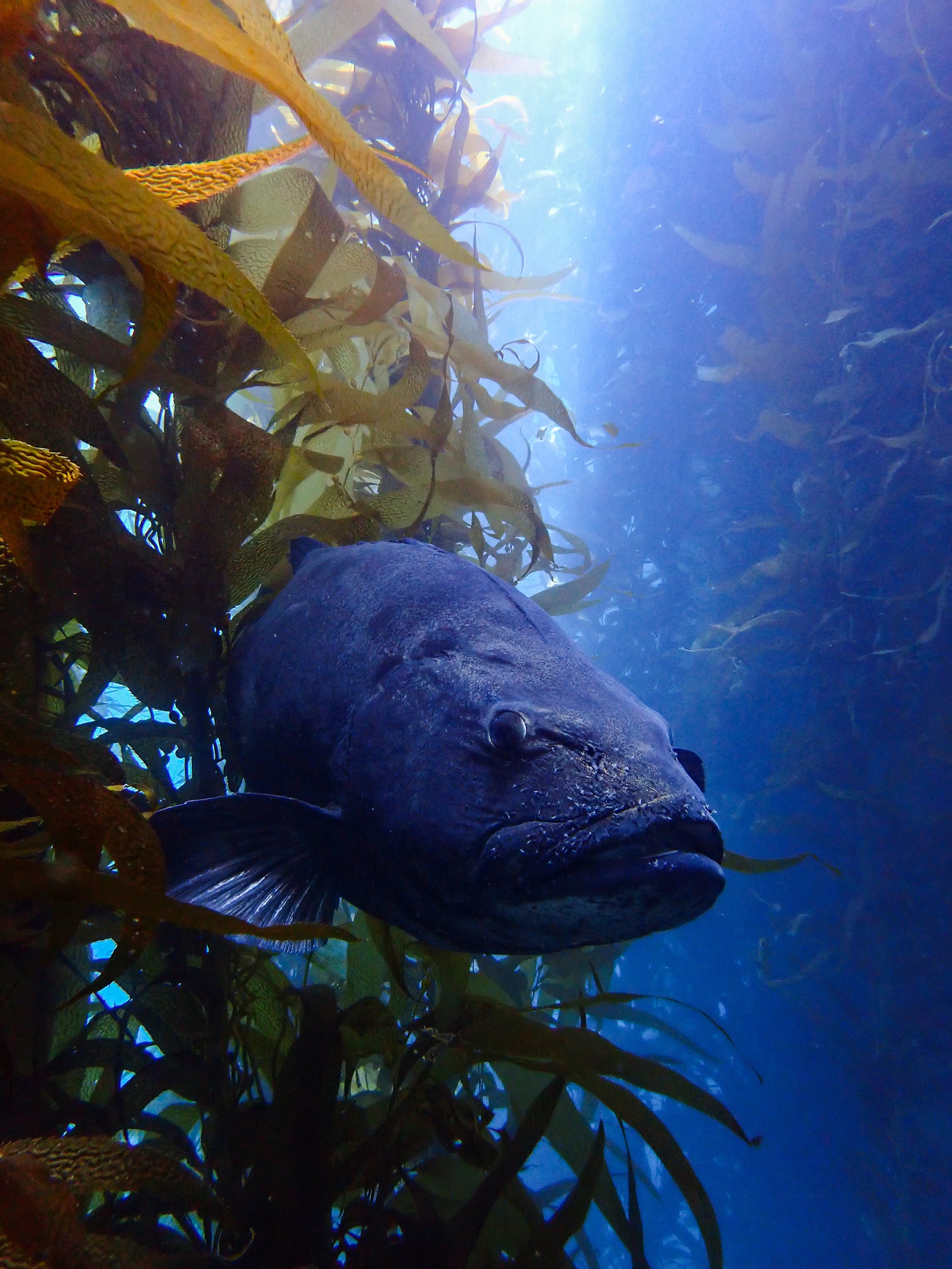
Spotting Giant Sea Bass
Words by Nico Becerra. Photos by Kayla Feairheller.
Protecting Gentle Giants
Spotting Giant Sea Bass is an organization funded by the University of California, Santa Barbara that is centered around the conservation and monitoring of the critically endangered Giant Sea Bass population off the coast of Southern California. It was founded by devoted students and researchers at UCSB who were inspired by the beauty as well as the significance of the species and the indisputable role they serve in our oceans. The Giant Black Sea Bass (GSB), frequently referred to as the Black Sea Bass, is a tertiary species that plays a key role in maintaining the health of the marine ecosystem. This is because the GSB has no real predators besides white sharks and humans. Instead, they eat an assorted diet that includes many fish whose populations are kept in check because of it.
Citizen Science
The team at Spotting Giant Sea Bass is concerned with monitoring the behavior and movements of these creatures with the goal of balancing their populations to prevent them from becoming extinct. Through their research, they hope to discover and better understand the factors that are responsible for endangering this species, such as overfishing and habitat destruction. Using this information, researchers will be able to create more well-defined conservation strategies that ensure the long-term viability of the species. Through citizen science, Spotting Giant Sea Bass involves the public with data collection. This allows individuals who are passionate about the ocean to assist in Spotting Giant Sea Bass regardless of a marine biology background and simultaneously allows their mission statement to be spread to people beyond the niche industry. Citizen scientists help the organization by participating in various activities such as reporting sightings of the animal, recording behaviors and movements, and assisting with data analysis under the moderation of a scientist.
It is exciting that we have the opportunity to expand our relationship with Andrew Pettit and his team at UCSB. We will collaborate with them this summer to carry out a behavioral analysis of Giant Black Sea Bass (GSB) in relation to their cleaner fish. The objective of this study is to address the following questions about the GSB's behavior:
Why are the Giant Black Sea Bass traveling to the area during these months?
What are the benefits that the kelp forest ecosystem on Catalina Island provides to the Giant Black Sea Bass?
What other fish species do we need to protect in the ecosystem to ensure a healthy and hospitable environment for the Giant Black Sea Bass?
Behavioral Analysis Surveys
The survey dives we conduct as part of this study will have three key objectives. First, we aim to gather photographic evidence of the Giant Black Sea Bass (GSB). This will include capturing images from both sides of these magnificent creatures to provide comprehensive information that can aid in tracking them through our partner Spotting Giant Sea Bass. Second, it is important for us to observe and record their behavioral patterns during the encounter closely. We will record long-form video of the fish throughout the encounter to capture behavioral changes on film. The list of behaviors we'll be looking for include courting (circling or nudging), cleaning, floating/hovering, eating, aggregating, spawning, vocalizing (creating a sonic boom), and swimming. Finally, we intend to document any cleaning behavior displayed by fish in proximity to GSBs. We will be recording the species of fish that we see cleaning the GSB, the number of "pecks" that these fish are using to clean, and the location on the GSB where these fish are pecking. This data will help us identify what indicator species we need to see in our kelp forest ecosystem to ensure the GSB continues to make this migration in the future.
Fish Abundance Surveys
To further inform this species assessment, we will also be using the data we collect in our REEF roving diver surveys to understand the abundance of the species that are most important to the Giant Black Sea Bass. Most of the species we will be counting are in the Wrasse family including the Sheephead, Rock Wrasse and Señorita. An important prey species for the GSB is the Ocean Whitefish, which we will also be surveying for.
Sheephead. Image by Kayla Feairheller.
Señorita. Image by Monterey Bay Aquarium.
Ocean Whitefish. Image by CA Sea Grant.

“We hope this is the first of many studies on this critically endangered species that we get to complete with Andrew and his team and we’re eager to see what we can learn through our work underwater this summer!”
Catalina Monitoring Program
Over the course of our survey season, our team at Bleu World will work with our volunteers and our dive community on Catalina Island to conduct the survey dives described above and we will report all of the data we collect to the team at UCSB. Once we've completed the survey season in the fall, we will work closely with the team to analyze the results so that we can publish our findings in 2025. We hope this is the first of many studies on this critically endangered species that we get to complete with Andrew and his team and we're eager to see what we can learn through our work underwater this summer.
Diving with Giant Black Sea Bass
Although I haven’t had the pleasure of engaging in work with this organization specifically, I can tell you that seeing one of these magnificent fish in person is truly something to behold. It was years ago, and I was scuba diving with my dad off of Two Harbors, and we both didn’t know fish of this size even existed. Needless to say, it caught us very off guard. I saw something moving in my peripheral vision, and when I first glanced at it I thought it was a shark and had a sudden rush of anxiety. However, once I got a closer look at it, I knew that it was just a comically large fish, but I hadn’t seen or heard of anything like it before. Once I got comfortable with the giant sea bass, I just gazed at the goliath creature in awe. This one in particular was the largest one I have ever seen to date, and it looked to be one that was in the latter portion of its life. I started getting closer to it to further scrutinize its features, and this one had black and beige spots speckled throughout its skin as well as senorita fish cleaning it in exchange for its massive presence. My dad made a noise underwater that showed me that maybe he was uncomfortable with being near such a massive presence, so I distanced myself again. As I was distancing myself, I heard a clamorous direction come from where the fish was, and it was gone. I later learned that these fish actually bark when they feel threatened, and escape shortly after making that thunderous noise. Nevertheless, this experience was profound and made me adore this conspicuously large species of fish.












